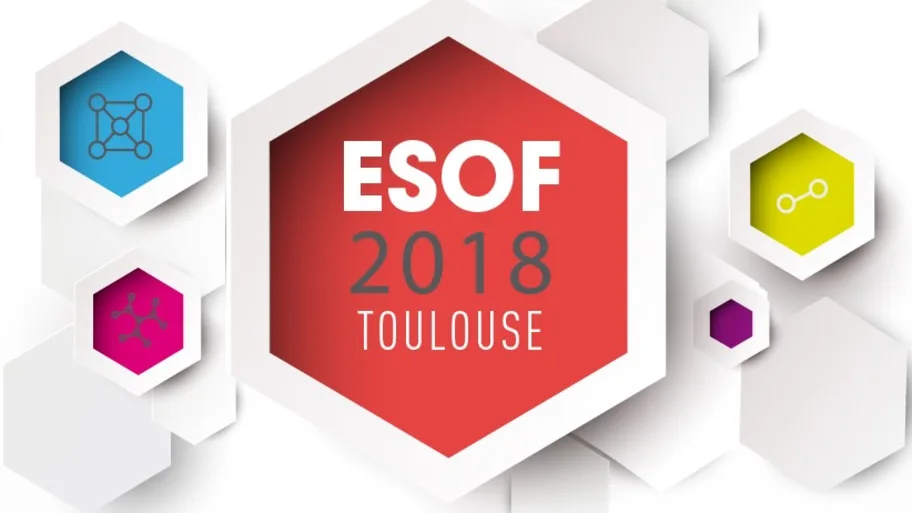
- Science News
- Open science policy
- Making Open Science the modus operandi in Europe
Making Open Science the modus operandi in Europe

If Open Science is to be the modus operandi for science in the future — as the EU has proposed — how can we foster a transparent and competitive scholarly communication market in the digital era and incentivize researchers to use open science practices?
Around 100 stakeholders representing researchers, universities and funders gathered to discuss these critical questions at a policy symposium organized by Frontiers, in cooperation with the Austrian EU presidency and SwissCore on 29 November 2018 in Brussels, Belgium.
Florian Pecenka (Austrian Permanent Representation to the EU) opened the event by giving a sense of the scale of the scholarly publishing market — which involves some 34,500 scientific peer-reviewed journals which publish around 2.5 million articles each year. The European Commission’s support for Open Science is clear, he explained, from the grant conditions within the Horizon 2020 and proposed Horizon Europe research programs and the European Open Science Cloud initiative.
Fostering transparency and competition
The first session focused on fostering a transparent and competitive scholarly communication sector in the digital era.
For Kamila Markram (Frontiers), making science open in a responsible manner requires a transparent marketplace that fosters competition and systems for high-quality Open Access publishing at scale. OA publishing models based on article processing charges (APCs) have now shed light on publishing costs. APCs average between €1,500 and €2,500, considerably less than the estimated €4,000–€5,000 per article paid via the subscription-based system.
Meanwhile, Scopus data show that for pure Open Access publishers, citation rates per article — a measure of quality — are among the highest of any publisher. What we need now, said Markram, is to ban non-disclosure agreements between publishers and libraries to foster transparency, price benchmarking and competition. Frontiers’ transparent national OA agreements with Austria and Sweden show how this is possible.
Alexis Walckiers (Universite Libre de Bruxelles) explained certain imperfections of the subscription-based market that are associated with high profit margins among some publishers. The market is ‘multi-sided’, meaning that publishers need only serve one customer sector well (e.g., authors) in order to retain other sectors (i.e., libraries). This is compounded by limited price-sensitivity (because libraries pay, not authors or readers), non-transparency of prices and journal bundling within ‘big deals.’ Crucially, according to Walckiers, Open Access initiatives such as Plan S must satisfy all stakeholders involved.
Professor Michael O. Hengartner (Zurich University and SwissUniversities) presented the Swiss national Open Access strategy, which foresees that all scholarly publications funded by public money must be open access by 2024. Negotiations with international publishers started in 2018 based on a flexible approach: institutions can decide between Green OA, Gold OA and hybrid. Measures envisaged included support for journal flipping to open access and for repositories, together with a legislative environment that supports text and data mining.
For Falk Reckling (Austrian Science Fund; FWF), publishers should act as service providers that facilitate the navigation, understanding and application of research results in a transparent way. Operationally, this would mean that publishers should provide immediate open access to quality-controlled publications and data, with unrestricted copyright for content mining. Moreover, agreements between publishers and funders should be openly accessible, he said.
Finally, Stephan Kuster (Science Europe) updated attendees on Plan S — a collective action by the cOAlition S group of research funders who will require that grantees publish in Plan S-compliant Open Access journals or platforms from 2020 onward. Coaliton S currently includes 13 national funders and three charitable foundations (including the Wellcome Trust and the Bill & Melinda Gates Foundation), with the support of the European Commission and the European Research Council. Implementation Guidance on Plan S is now open to public feedback until 8 February. “Plan S is not intended to force researchers, it is intended to force publishers,” Kuster stressed.
The panel discussion focused on ensuring that initiatives support Open Access in social sciences and humanities, as well as sciences, including stratified article processing charges and waiver policies. Other issues are including support for alternative publication models, including researcher-driven platforms and learned society journals, and the opportunities and potential risks of integrated data analytics and management systems.
Incentivizing and rewarding Open Science practices
So how do we ensure that researchers are incentivized and rewarded for adopting open science practices? This was addressed in Session 2.
Jean-Claude Burgelman (European Commission) described publishing metrics and incentives as the “Achilles heel” of Open Science uptake. An EC expert group is currently developing open science indicators that will be discussed by the Commission’s Open Science Policy Platform and will result in a “Bucharest Declaration”, which is intended to complement the San Francisco Declaration on Research Assessment (DORA). “Without new metrics there can be no new rewards or incentives,” he concluded.
For Ingeborg Meijer (University of Leiden) researchers’ realities are not yet aligned with Open Science. This is the “pink elephant in the room,” given the persisting pressure to publish in high Impact Factor journals. She warned of the critical challenges in achieving the cultural change needed, and stressed the importance of defining quality in scientific research beyond publications alone, improving reproducibility and citizens’ understanding of scientific results.
Gareth O’Neill (Eurodoc) agreed with many comments, adding that “survey data reveal early-career researchers are being asked to do Open Science, yet many do not understand how and are not being adequately supported at their institutions. Training and support for Open Access and Open or FAIR (Findable, Accessible, Interoperable, and Reusable) Data (management) is especially important for early-career researchers. In addition, institutions and funders need to move away from impact factors and the H-index in their research and career evaluations, and start rewarding researchers for other research-related activities.”
Finally, Monique Ritchie (YERUN) underlined that universities are diverse and hence collaboration is vital to find a common framework for rewards and incentives. A variety of both ‘sticks’ and ‘carrots’ should be considered, including research performance management and recruitment policies, employer reward schemes (e.g., extended research or educational leave), and Open Science Excellence Awards such as the one that YERUN plans to introduce. To foster change, universities could be encouraged to provide demonstrable evidence of institutional Open Science policies to access specific research funding streams.
The panel discussion touched on many challenges and potential solutions, including the influence of university rankings, the use of author-level digital publishing metrics (such as views and downloads), and the assessment of other academic activities — such as teaching. It was noted that the Joint Research Council (JRC) assessment of scientific recognition has pillars that could be adapted to help assess Open Science.
Fred Fenter (Frontiers) closed the event, concluding that when change is hard — as in open science — one needs a mission approach with strategies, tools, teams and a map. Recent initiatives, including plan S, are now providing a strong frame of reference to allow the community to advance collectively toward open science.






